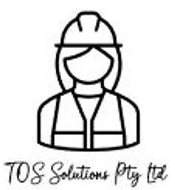Title Page
-
What is being assessed?
-
Affected work area:
-
Location
-
Conducted on
-
Prepared by
-
Add signature
Analysis of workplace injury records
-
Is there a record of injuries relating to this worksite task? If YES, ensure Part 3: Analysis of Workplace Injury Records is completed. If NO, complete the Risk Identification Checklist below.
Identify the most frequent and most severe manual handling injuries that have occurred with the task over the last six months. -
Location where the injuries occurred
-
Job or task of the injured person
-
Part (s) of the body injured (eg Back, Neck leg)
-
Nature of the injury (eg. Sprain, laceration, facture)
-
Type of accident (eg. overexertion, slip, fall)
Risk identification checklist
-
Repetitive or sustained awkward posture or application of force. Task requires any of the following actions to be done more than twice per minute or for more than 30 seconds at a time. For example: bending or twisting the body, neck, arms or wrists, reaching, lifting, pushing, pulling, carrying, very fast movements, exerting a force in an awkward posture or having arms fully extended to grip the material.
-
Describe the findings, then complete the risk assessment process – Using the risk matrix tables above, list below the identified risks
Click +Add to begin
Assessment
-
Comments
-
Current risk rating<br>Use the Risk Matrix<br>
-
Corrective action
-
Residual risk rating<br>Use the Risk Matrix
-
Repetitive or sustained movement. Is the task done for more than 2 hours in any whole shift or continually for more than 30 minutes at a time? For example: bending or twisting reaching, lifting, pushing, pulling, carrying, very fast movements for more than 30 minutes at a time.
-
Describe the findings, then complete the risk assessment process – Using the risk matrix tables above, list below the identified risks
Click +Add to begin
Assessment
-
Comments
-
Current risk rating<br>Use the Risk Matrix<br>
-
Corrective action
-
Residual risk rating<br>Use the Risk Matrix
-
Application of high force needed. Task requires any of the following actions to be done at any time. For example: lifting, lowering or carrying heavy loads, sudden or unexpected forces, pushing or pulling objects that are hard to move, exerting force at the limit of the grip span, or the task is difficult to do.
-
Describe the findings, then complete the risk assessment process – Using the risk matrix tables above, list below the identified risks
Click +Add to begin
Assessment
-
Comments
-
Current risk rating<br>Use the Risk Matrix<br>
-
Corrective action
-
Residual risk rating<br>Use the Risk Matrix
-
Exposure to environmental factors. Task requires the following, exposing the person to factors which can exacerbate other risk. For example: vibration, heat, cold, humidity or thick protective clothing
-
Describe the findings, then complete the risk assessment process – Using the risk matrix tables above, list below the identified risks
Click +Add to begin
Assessment
-
Comments
-
Current risk rating<br>Use the Risk Matrix<br>
-
Corrective action
-
Residual risk rating<br>Use the Risk Matrix
-
Handling live animals or people. Task requires any of the following actions to be done at any time. For example: handling livestock, sheering, nursing, vet, aged care.
-
Describe the findings, then complete the risk assessment process – Using the risk matrix tables above, list below the identified risks
Click +Add to begin
Assessment
-
Comments
-
Current risk rating<br>Use the Risk Matrix<br>
-
Corrective action
-
Residual risk rating<br>Use the Risk Matrix
-
Handling loads that are unstable unbalanced or difficult to move. Task requires any of the following actions to be done at any time. For example: handling packages which have no handles, packages which are loosely packaged such that the contents may move, products where the weight is very unevenly distributed.
-
Describe the findings, then complete the risk assessment process – Using the risk matrix tables above, list below the identified risks
Click +Add to begin
Assessment
-
Comments
-
Current risk rating<br>Use the Risk Matrix<br>
-
Corrective action
-
Residual risk rating<br>Use the Risk Matrix
-
Other factors not mentioned. For example: Other manual handing risk factors not otherwise described here.
-
Describe the findings, then complete the risk assessment process – Using the risk matrix tables above, list below the identified risks
Click +Add to begin
Assessment
-
Comments
-
Current risk rating<br>Use the Risk Matrix<br>
-
Corrective action
-
Residual risk rating<br>Use the Risk Matrix














